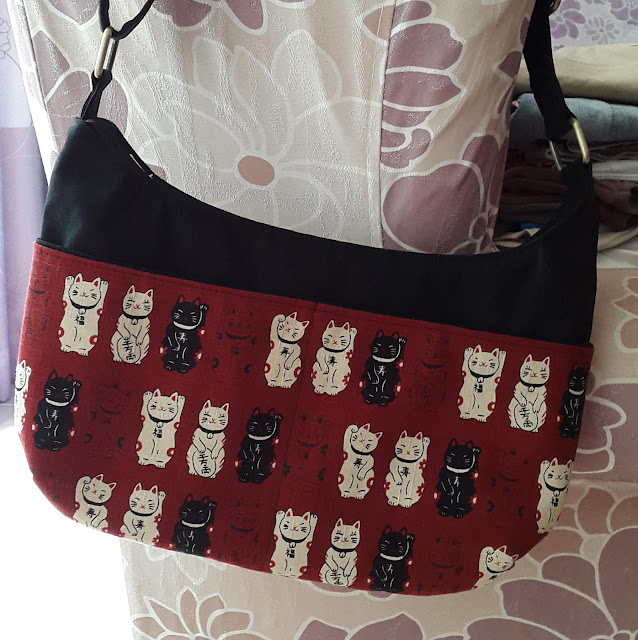I started this project many months ago. The pattern is
The Dainty Tote Bag, a free tutorial by Three Owls Handmade. It has a few sewing elements that I've been wanting to try my hand on... specifically
quilting and
binding raw edges on a bag. I started quilting one of the side panels using criss cross diagonal lines, hated the result and abandoned the project.
Maybe it was the new year, I don't know, but with all the Christmas gifts and other sewing projects done and out of the way, I made a resolution to finish all that I had started but never finished. I have about half a dozen of these in my TBF (
to be finished) bin :)
Hence, the
Dainty Tote Bag was revisited. After staring at the main body piece for a week, hoping for some inspiration, it finally came... Instead of geometric lines, why not use uneven, wavy lines in the same thread colors as the patterns on the fabric!
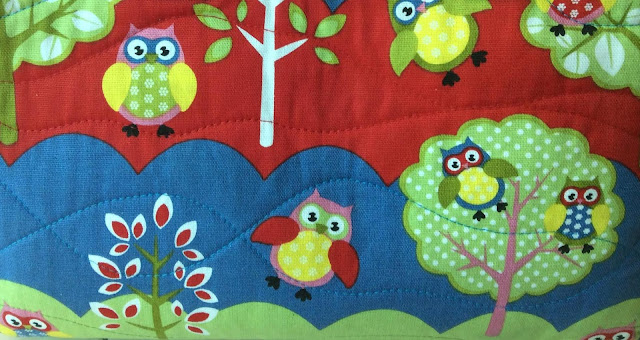 |
| Bag panel quilted with uneven wavy lines |
I loved it. Finally, progress!
I used the same owl pattern fabric as
my first bag sewing project. I also used my own measurements in order to fully utilize the fabric scraps that were left from the previous project.
My finished bag measures
14" (width) x 9.5" (height) x 4.5" (depth), just nice for a few books and some extras.
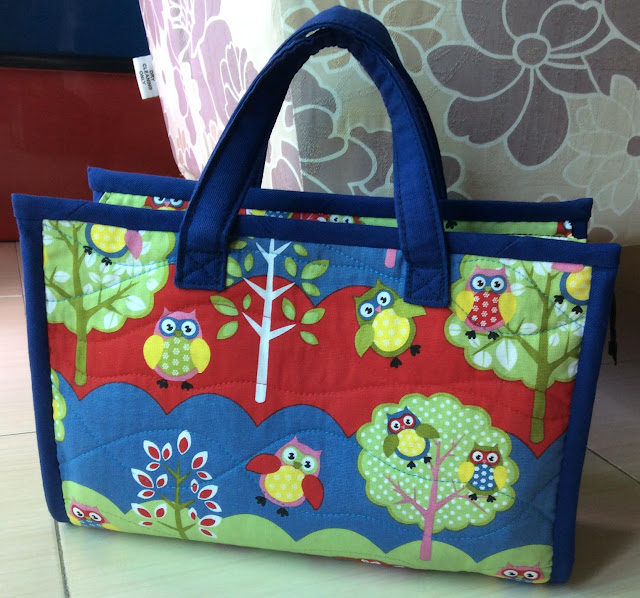 |
| My quilted Dainty Tote Bag |
The tutorial was well written with lots of pictures. I did have some trouble when it came to sewing the side panels to the main panel. The layers were
very thick, as each piece consisted of a layer of batting between two layers of canvas, and had to be sewn at a
curve! I ended up
hand basting before sewing the pieces together. That helped a lot.
 |
| Side view/panel of the bag |
The binding was also a little intimidating. I tried machine sewing the whole thing which didn't work out too well.. couldn't get that half inch bulk to glide smoothly under the sewing machine, and the top stitching came out horribly. So I ditched the top stitching and finished the
binding by hand with the ladder stitch.
Hand stitching was slow and tedious, but in the end, I was surprised by how neat and tidy it turned out. There is nothing wrong with hand stitching. Sometimes you just can't get something done under the machine needle. Other times, hand stitching gives you more control and makes a seemingly impossible task possible. It certainly is
one way to finish binding seams/raw edges. I guess sometimes, a little patience goes a long way.
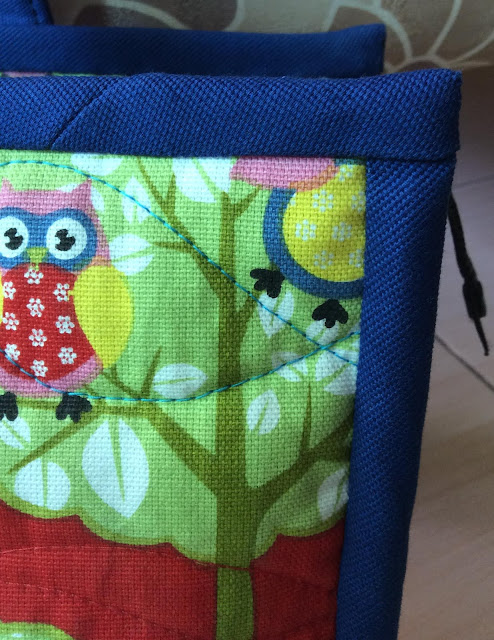 |
| Hand-stitched binding produces a neat finish for the bound raw edges |
The bag is secured with a
top zipper closure.
 |
| Top zipper closure |
And has two
open pockets inside.
 |
| Bag interior |
I am very happy with how the bag turned out. It's cute, durable and washable. My daughter uses it as her "
Little Book Bag" (
小书包) for those special school days when only a few books are required. And I am definitely glad that I saw it through. One down , a few more (
in my TBF bin) to go :)
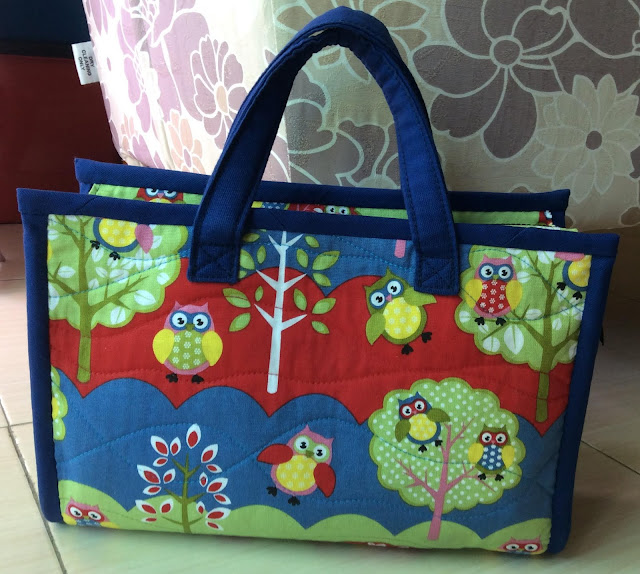 |
| My handmade Little Book Bag |




















